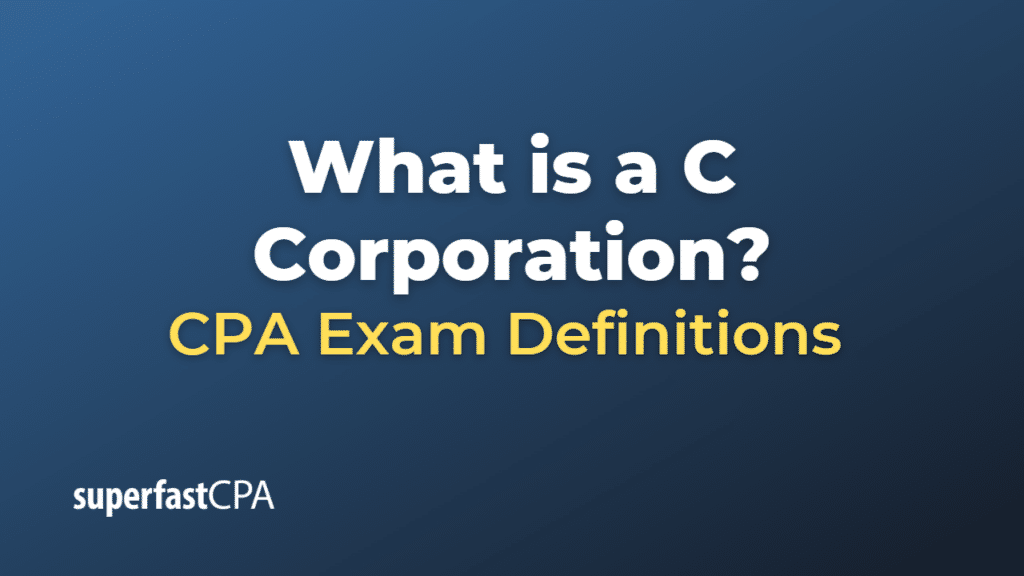C Corporation
A C corporation, often simply referred to as a “C corp,” is a type of business entity in the United States that is organized under the federal tax code as a separate legal entity, distinct from its owners (shareholders). It is one of the most common types of corporations and is named after Subchapter C of the Internal Revenue Code.
C corporations provide limited liability protection to their shareholders, meaning that the personal assets of shareholders are generally not at risk for the debts or legal liabilities of the corporation. The ownership of a C corporation is represented by shares of stock, which can be easily transferred and traded.
One of the key features of a C corporation is its tax structure. A C corporation pays federal income taxes at the corporate level, and any dividends distributed to shareholders are also taxed at the individual level, creating a double taxation situation. However, C corporations can take advantage of certain tax deductions and benefits that other types of business entities may not be able to access.
Some other characteristics of a C corporation include:
- Unlimited number of shareholders: There is no limit on the number of shareholders a C corporation can have, making it a popular choice for companies seeking to raise capital through the issuance of stock.
- Continuity of existence: A C corporation has a perpetual existence, meaning it continues to exist even if the owners (shareholders) change or pass away.
- Centralized management: A C corporation is managed by a board of directors, which is elected by the shareholders. The board is responsible for overseeing the company’s management and making strategic decisions, while the day-to-day operations are carried out by the company’s officers.
C corporations are often chosen by businesses seeking to raise capital, attract investors, or eventually go public. However, they may not be the best choice for all businesses due to their complex regulations and potential double taxation.
Example of a C Corporation
Let’s consider a hypothetical example of a C corporation.
Suppose you and two friends decide to start a technology company that develops innovative software solutions. You decide to incorporate your business as a C corporation, named “Innovative Tech Corp.” Each of you invests an equal amount of capital and is issued one-third of the total shares in the company, making each of you a shareholder with equal ownership.
Innovative Tech Corp. operates as a separate legal entity, which means that your personal assets and those of your friends are generally protected from any debts or legal liabilities the corporation might incur. The company is managed by a board of directors, which you and your friends initially serve on, and you also hire a CEO to oversee the day-to-day operations of the business.
As a C corporation, Innovative Tech Corp. is subject to corporate income tax on its profits. If the company decides to distribute dividends to its shareholders (you and your friends), those dividends will be taxed again at the individual level, resulting in double taxation. However, the company can also take advantage of tax deductions and other benefits that may not be available to other types of business entities.
Over time, Innovative Tech Corp. grows and becomes successful, attracting the attention of venture capital firms and other investors. The C corporation structure allows the company to issue new shares and raise additional capital from a large number of investors without impacting the limited liability protection provided to the original shareholders. Eventually, the company might decide to go public, offering its shares on a stock exchange for even broader access to capital and liquidity.













